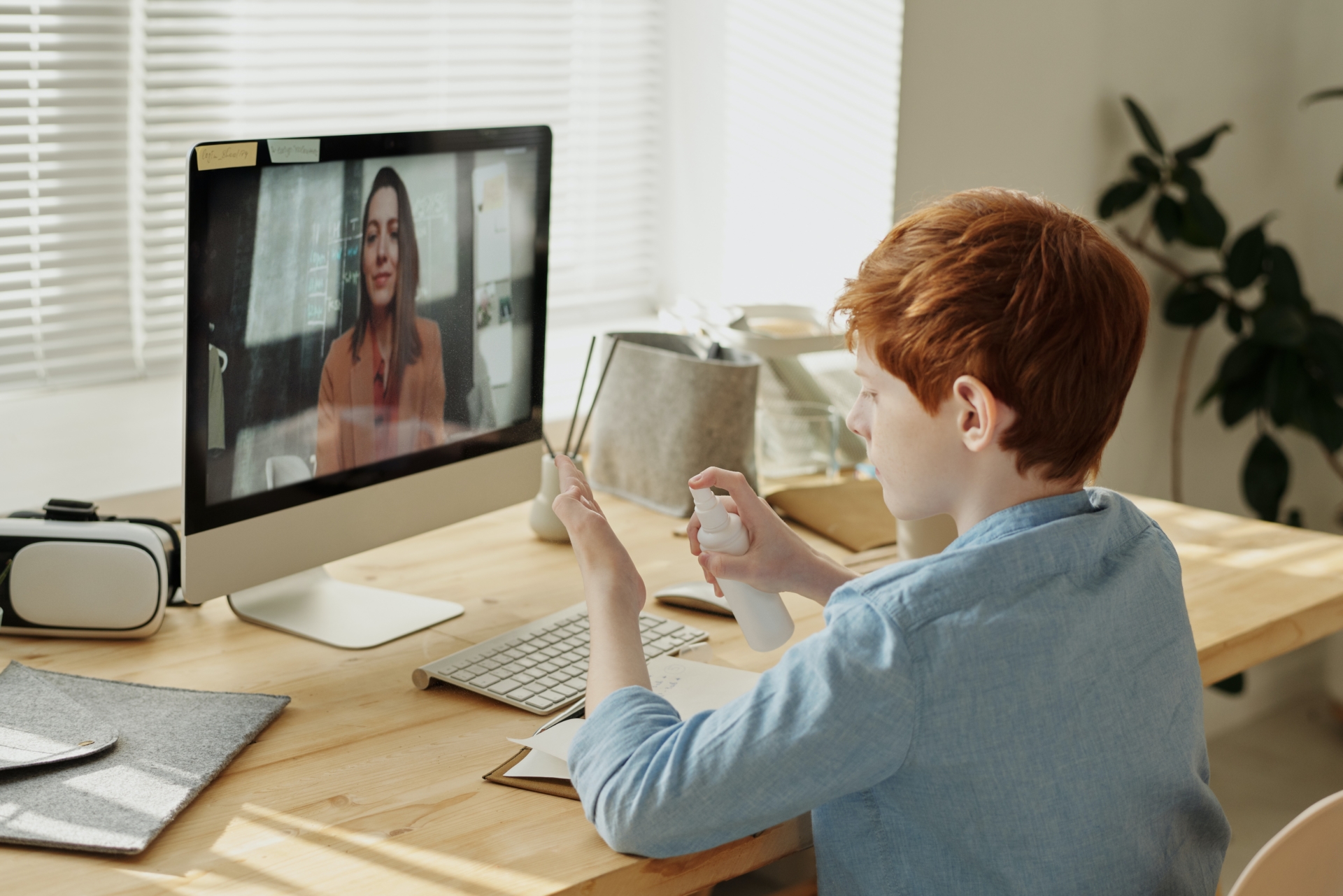The Arizona Department of Health Services recently updated its COVID-19 recommendations for closing schools, and with the number of cases gradually increasing across the state, schools may pivot once again from hybrid classes to online-only learning. To learn how the pandemic has altered digital learning, Az Business sat down with thought leaders Brian Mueller, president of Grand Canyon University; Tonya MacBeth, partner with Burch & Cracchiolo; and Steve Sarmento, the director of educational services for Edkey, for a panel discussion on virtual education.
Highlights of discussion
Az Business: How did the pandemic impact Grand Canyon University?
Brian Mueller: We were fortunate. We did two things prior to the pandemic taking place. One, we invested $250 million in technology in the last 10 years, thinking that technology was going to have a major impact on higher education going forward. And all of our traditional ground campus students were on the system prior to the pandemic. And so our faculty members would use it in whatever way they wanted to. Some would have discussions between class sessions. Other ones would have students submit their work that way. And so when the pandemic hit and we had to send the students home, all the students were familiar with the system, knew how to use the system, were comfortable with it, as were the faculty members. And so things went very well for us in the spring and in the summer.
AB: The pandemic shook many K-12 schools. How was Edkey so well prepared to pivot?
Steve Sarmento: Edkey has been supporting Sequoia Choice Arizona Distance Learning School, which is an online distance learning school that’s been in operation since the 1990s. We were able to leverage the skills and expertise in that online distance learning model and get that into our brick-and-mortar schools. So all of our teachers basically were able to be mentored by those experienced teachers that had been doing online distance learning. And that was a great support to our brick-and-mortar schools. It allowed them to be able to pivot very quickly to a distance learning model.
AB: But the impact wasn’t only on the students. How has it impacted families?
Tonya MacBeth: All of our family clients who have school-aged children are experiencing tremendous disruptions and they’re trying to figure out how to manage their court orders, which were very specific and based on away learning or a traditional brick-and-mortar school learning schedule. Now, they are having to negotiate those interpersonal relationships all over again. We used to set up exchanges so that they always happened at the school and there was no person-to-person parental transfers occurring when possible. That’s not possible anymore. And it’s shifted the dynamic in a very dramatic way for families.
AB: GCU has long been a leader in online education. How important was that history and that investment in the technology to GCU being able to pivot so quickly and so effectively?
BM: It was really important. We’ve got two major programs. We have about 23,000 traditional students on our campus. We also have 85,000 working adult students who are attending online. And a lot of people look at higher education with those two big markets in mind. We believed going back 10 years ago that there was going to be more than two markets and that universities and K-12 institutions were going to have to become very flexible to meet the needs of people. The old industrial model of K-12 education and higher education is very limited in terms of addressing the needs that exist through our society. And so having been prepared in terms of those two large markets was just the first step.
AB: So where do we go from here?
BM: The second step now is that universities are going to have to be able to develop five or six different ways to interact with the university, depending upon the person’s lifestyle and what their economic and financial needs are. Being ready with those two big markets was just a precursor. Now, what’s going to happen is universities are going to have to take a look at the variety of lifestyles, the variety of learning needs, economic needs, etc., and be able to offer people the ability to attend college, earn credits, work towards degrees in a multitude of different styles.
AB: We’ve utilizing the same K-12 model for many years. How will the experience of going through the pandemic impact K-12 education?
SS: For the students who are kindergartners this year, many of the jobs they’re going to be applying for when they graduate college don’t even exist. How are we going to prepare them for that? We have to use the tools that are cutting-edge now because those are going to be the ones that are everyday tools by the time they’re looking to get those jobs. So, for me, it’s really about innovating in terms of what we want the students to be able to know and do. And that’s going to come from the students and parents being involved in making those choices and finding a school that’s forward thinking and flexible and meeting the needs of their students. At Edkey, we say, “We are a place where every child is known,” and our teachers take that to heart. It’s not about what the teacher needs in that classroom, it’s what does that teacher need so that the students can be successful? I think the digital learning trend is going to see students taking ownership of their own education, rather than schools driving that. Students are going to be owning and taking responsibility for their own leadership. And that is where education needs to be heading toward in the future.
AB: How had COVID shifted the perception of education in the home?
TM: There’s going to be a significant shift in terms of the appreciation that parents have for teachers. A lot of my clients and other parents have spoken to me about the fact that getting a middle-school-aged boy to care about algebra or math may be a challenge that requires somebody outside of the mother and father to really stimulate that interest. And that role has been the teacher and the teachers have been very good at engaging students and bringing along the reluctant learner. That reluctant learner is now also the same student who needs to pick up their socks off the bedroom floor. We have to understand that not every parent is the best teacher and our parents are beginning to understand the value that teachers bring to the learning process. And so I think post-COVID, we’re going to have a real renewed appreciation for the hard work that classroom teachers do, whether that’s electronic-based or in-person. And I think that’s a wonderful shift.
AB: What’s going to be the long-term impact of the pandemic on education?
BM: I think whether it’s K-12 or whether it’s higher education, as kids grow up, they develop passions. They get very excited about certain areas of life. And the industrial model of higher education really makes it difficult for them to really seek out those passions, to really develop them in a way that if we were more flexible in how we deliver education, that could happen. I’ll give you a quick example. When we closed in March and sent the kids home and we finished the last four weeks of the semester online, a group of students that I’m close to went backpacking in Colorado. They were together for four weeks. And the things that they learned and discovered about living in the mountains and being together, and they just explored an area of the world they’d never been in before. And they completed their coursework very successfully.
The internet is a tremendous communication tool and it doesn’t necessarily mean that when you go online, you’re going to be by yourself. There are ways to make it a very social experience. And so you can have both things, but what’s going to happen in the future is that universities are going to have to be able to meet the needs of a lot of different students. And they’re going to have to be very flexible in how they deliver. The people that can do that are going to be the winners going forward.




